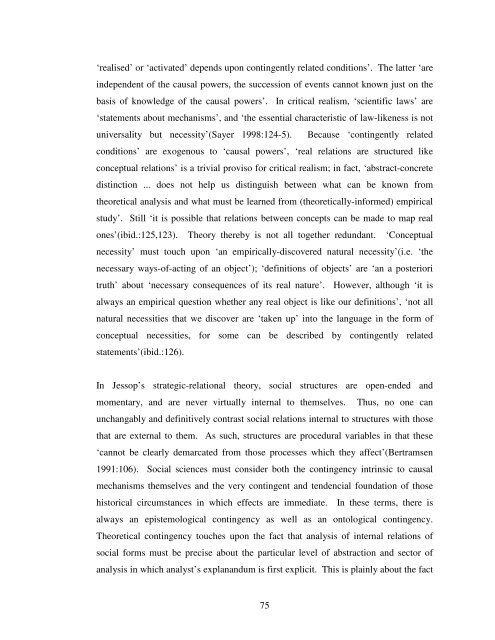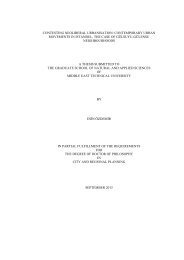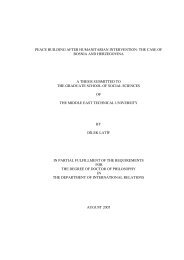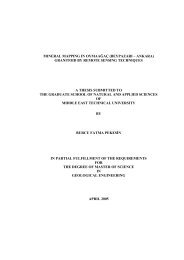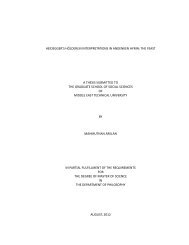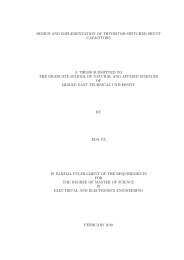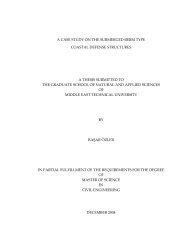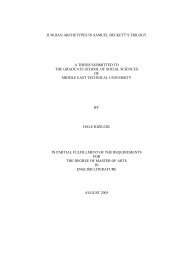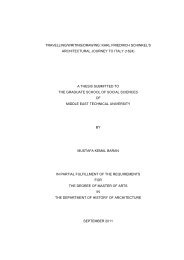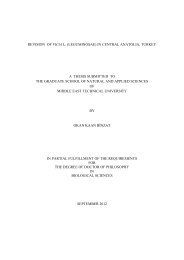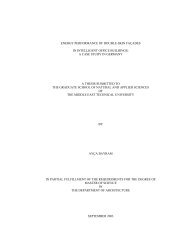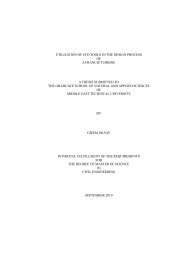View Original - Middle East Technical University
View Original - Middle East Technical University
View Original - Middle East Technical University
Create successful ePaper yourself
Turn your PDF publications into a flip-book with our unique Google optimized e-Paper software.
‘realised’ or ‘activated’ depends upon contingently related conditions’. The latter ‘are<br />
independent of the causal powers, the succession of events cannot known just on the<br />
basis of knowledge of the causal powers’. In critical realism, ‘scientific laws’ are<br />
‘statements about mechanisms’, and ‘the essential characteristic of law-likeness is not<br />
universality but necessity’(Sayer 1998:124-5). Because ‘contingently related<br />
conditions’ are exogenous to ‘causal powers’, ‘real relations are structured like<br />
conceptual relations’ is a trivial proviso for critical realism; in fact, ‘abstract-concrete<br />
distinction ... does not help us distinguish between what can be known from<br />
theoretical analysis and what must be learned from (theoretically-informed) empirical<br />
study’. Still ‘it is possible that relations between concepts can be made to map real<br />
ones’(ibid.:125,123). Theory thereby is not all together redundant. ‘Conceptual<br />
necessity’ must touch upon ‘an empirically-discovered natural necessity’(i.e. ‘the<br />
necessary ways-of-acting of an object’); ‘definitions of objects’ are ‘an a posteriori<br />
truth’ about ‘necessary consequences of its real nature’. However, although ‘it is<br />
always an empirical question whether any real object is like our definitions’, ‘not all<br />
natural necessities that we discover are ‘taken up’ into the language in the form of<br />
conceptual necessities, for some can be described by contingently related<br />
statements’(ibid.:126).<br />
In Jessop’s strategic-relational theory, social structures are open-ended and<br />
momentary, and are never virtually internal to themselves. Thus, no one can<br />
unchangably and definitively contrast social relations internal to structures with those<br />
that are external to them. As such, structures are procedural variables in that these<br />
‘cannot be clearly demarcated from those processes which they affect’(Bertramsen<br />
1991:106). Social sciences must consider both the contingency intrinsic to causal<br />
mechanisms themselves and the very contingent and tendencial foundation of those<br />
historical circumstances in which effects are immediate. In these terms, there is<br />
always an epistemological contingency as well as an ontological contingency.<br />
Theoretical contingency touches upon the fact that analysis of internal relations of<br />
social forms must be precise about the particular level of abstraction and sector of<br />
analysis in which analyst’s explanandum is first explicit. This is plainly about the fact<br />
75


